|
by Beverly Greer, RMT When you wake up in the morning with a crick in your neck, or feel a burning on the top of your shoulder blade, or have trouble turning your head to look behind you when you're driving, the culprit may be your Levator Scapula! The Levator Scapula starts out as four little muscles attached to the sides of the first four vertabrae in your neck. Then they join together into one muscle and end up attached to the top of your shoulder blade. There is a levator scapula muscle on both sides of your neck. This isn't the biggest muscle on the neck, but it sure does a lot of work! Like it says on the tin, Levator Scapulae elevates your scapula, aka the shoulder blade. Every time you shrug your shoulders, the levator scapula is working. Levator Scapulae also turns your neck on the same side. So if you want to look over your left shoulder, your left levator scapula is engaged. Along with other muscles at the back of the neck, levator scapula stabilizes your neck. When you are looking down to read or write, the levator scapula prevents your head from flopping forward onto your chest. Causes of Pain....Elevated ShouldersEvery time we raise our shoulders, we engage the levator scapula muscle. Most of us spend hours every day with this muscle engaged, then wonder why our neck and shoulders are so tight! Typing: One of the most common causes of levator scapula pain is working on a keyboard that is positioned too high. When typing, your shoulders should be down and relaxed, your elbows should be at a 90 degree angle, and the keyboard should be level with your forearms. Either use a keyboard tray, or elevate your chair. Just be sure your feet are flat on the ground or on a footstool. Try this experiment. Stand behind a friend who is working with a proper desk setup, with the keyboard on a tray below their desk. Rest your hands on their shoulders. Now have them move their hands up to the desktop, as if their keyboard is there. You should feel their shoulders raise as they do this. Now imagine working for 8 or 9 hours a day like this, with the shoulders raised and the levator scapula engaged. Pain, stiffness and burning at the top of the shoulder blade is often caused by prolonged use of the levator scapula. Laptops: Working on a laptop is especially problematic. In order to have the screen at eye level, you must raise your shoulders to reach the keyboard. In order to work on the keyboard with your shoulders down, you must bend your head forward in order to see the screen, which as we mentioned earlier, also engages the levator scapula! If your laptop is your primary computer, or if you are going to be working on it for more than an hour or two, it is strongly recommended that you invest in an external keyboard. Elevate the laptop on a stand so that the screen is arms length away and just below your line of vision. Either use a keyboard tray to hold the keyboard so your shoulders are down and relaxed, or elevate your chair. Just make sure your feet are flat on the floor or a footstool. Driving: Long hours of driving with your hands near the top of the steering wheel, in the '10 and 2' position cause the levator scapula to be engaged. The optimum position when driving is to have the seat slightly reclined (about 15 degrees) and the chair seat tipped forward. Keep your elbows slightly bent and your hands at the '9 and 3' position. The middle of the headrest should be level with the top of the ear. Working with your arms raised: Working with your arms raised above your head for prolonged periods of time can also irritate the levator scapula. To help reduce neck pain, stabilize your shoulder blade when you raise your arm.
The muscles at the front of the neck vertebrae, the longus capiti and colli, prevent the head from falling backwards. The scalene muscles, located at the sides of the neck, prevent the head from wobbling from side to side. The splenius muscles, and our old friend the levator scapula, work from the back of the neck to prevent the head from falling forward onto your chest. Because we spend so many hours a day reading or working on computers with our heads bent forward, the poor levator scapula is constantly straining to keep our heads from falling onto our chests. The more forward the posture of our head is, the harder this muscle has to work. Remember when I said the average head weighs about 12 pounds? That's with properly aligned posture. The farther forward your head is, the more it weighs! If you have head forward posture, your levator scapula is stretched tight all day long, trying to stabilize a 42 pound head! Symptoms and CausesHead forward posture can do more damage than causing a tight, overworked levator scapula muscle. It can also:
Head forward posture is most commonly caused by:
Stiff Neck? Blame Levator Scapula!8/20/2012
23 Comments The 'pecs' are your chest muscles. Tight, short pecs cause rounded shoulders and can increase head forward posture.
Credit: Doug Alexander Kelsey Cooper
1 Comment
 Folks, it’s that time again and we’re back with the next instalment of our interview series with our marvellous Massage Therapy team. This go round, the spotlight is on our Neighbourhood Massage’s own Kim Hartford, who has been in practice as an RMT for 25 years, is a longstanding member of our team with a very loyal fan base. When Kim is not busy helping her clients feel better, she’s likely to be found adjudicating the registration exams for the newest crop Registered Massage Therapists at the CMTO, spending time with her family, or behind her camera capturing as many beautiful images as she can. Now here’s our Kim… -- What is the most rewarding aspect of working as a RMT? The most challenging? The most rewarding aspect of being a massage therapist is having someone arrive at the clinic completely frazzled from life’s stresses and pains, and realizing when they leave that I have been able to rid them of those issues, if only for a little while. The most challenging thing is the physical aspect. I have been in practice for twenty five years now, and for the last few years it has become more difficult to keep my own muscular ailments in check. I need to listen to my own advice about massage, exercising, getting enough rest and eating right. What drew you to the profession and what keeps you in it? Growing up I spent my days in the gym, which led to me studying Kinesiology at the University of Windsor. While there I volunteered at a physiotherapy clinic monitoring the various therapeutic machines used to help the athletes get back on track. Luckily, I also ended up taking a course that dealt with Athletic injuries and various ways to treat them. This was my first experience with learning about massage. I quickly realized I enjoyed the hands on approach to treating injuries as opposed to using machines. With massage therapy in addition to treating the injury, you also treat any and all areas of discomfort resulting from the body’s attempts to compensate for the pain from the injury site itself. I believe you should treat the body as a unit, because one area can’t function well on its own. Massage therapy allows me to treat my clients holistically – mind and body. Knowing that I’ve helped my clients by relieving their pain, improving their mobility and making them feel better overall, is what keeps me in the business. What unique skills do you bring to the team at Neighbourhood Massage? What would you say is your area of expertise in your practice as a therapist? Having a Kinesiology degree gives me greater understanding of how the body functions and which areas to target when various conditions are presented to me. I have also taken courses in Myofascial Release, Deep Tissue Neuromuscular Therapy and Craniosacral Therapy, which gives me a variety of techniques to draw on when treating clients. No two clients are ever the same, so being able to adapt treatments to address each client’s specific needs is important to my work. Over the course of my career, I have developed the ability to read the muscles and work at the level each individual needs. Deep tissue and Sports Massage are my areas of expertise, though I also work well with younger children because of my experience with my own kids. Staying active and being proactive about your healthcare will go along way to maintaining a high quality of life as you age. Kim Hartford, RMT What is the most common complaint your clients come in with and how do you help them deal with it?
I would say the most common ailments my clients come in with are upper back and neck pain. By combining deep tissue massage, fascial release, stretching, and low grade joint play of the shoulder blade and spinal segments, I’m able to reduce pain and restriction in these areas. For years I’ve been telling my clients to set an alarm on their computers to remind them to step away from their desk every hour or so, and now the research is backing me up. Our bodies are meant to move and recent studies show that sitting all day can really be detrimental to your health. The decrease in circulation that occurs with long bouts of sitting greatly increases the risk of developing a multitude of physical ailments. Anyone who works at a desk needs to make sure their work station is configured ergonomically and vigilantly watch their posture, to reduce the stress on their body. Finally, I always stress the importance of exercising regularly to my clients, even if its just going for a long walk and stretching afterwards. If you’re not living an active lifestyle, you really need to figure out what type of exercise works for you, so you are more likely to get moving and stick with it. What is the one piece of advice you wish all your clients would follow consistently to improve their overall health and well-being? How good are you at following your own advice? As I said before, always keep moving! Movement is essential for our bodies to function properly as we age. Take my father-in-law for example. He lived an active lifestyle until he was 90 years old, exercising every day to keep his joints moving so that he could ultimately do the activity he enjoyed most – golf. He also acted quickly, getting treatment for any aches or pains that arose right away, so he could get back to the golf course sooner. I try to keep active and give myself a break when I occasionally lose my way. Life gets busy sometimes and I know I will get back to it eventually. -- Kim can be found at the clinic Tuesdays 11:30am until 7pm, Wednesdays & Fridays 10am to 4pm, and Thursdays 10am to 1:30 pm.  Those of you who’ve been our loyal fans for a long while now will definitely be familiar with Esperanza Pabon. Her warm, friendly demeanour and skillful hands make her one of most popular therapists at our clinic (as anyone who’s ever tried to book an evening or weekend appointment with her at the last minute can easily attest to). Esperanza’s specialties include Myofascial Release, Deep Tissue massage, and Thermal Palms treatments, as well as providing her clients with massages that are both holistic, and physically healing. But enough of the preamble. Without further ado, I give you Ms. Esperanza Pabon… What is the most rewarding aspect of working as an RMT? The most challenging? I love the fact that my clients come in feeling uncomfortable and stressed, and always leave feeling better. It’s great to know that an hour or so spent with me really boosts their mood and decreases the discomfort they feel. On the flip side, I really enjoy my work, so the most challenging thing for me is that as time goes on I feel the limitations of my own body more and more each day. Being an RMT is definitely hard on the body. What drew you to the profession and what keeps you in it? I’ve always enjoyed helping people so finding a profession that allowed me to do that was important to me. Knowing that I help others to get relief from their pain and generally have a better, more relaxing day makes me feel good. Also, having the independence to create my own schedule is a big bonus. What unique skills do you bring to the team at Neighbourhood Massage? What would you say is your area of expertise in your practice as a therapist? I’ve been in practice for 15 years now, and during that time, in addition to being able to create great rapport with my clients to make them feel comfortable, I’ve developed my ability to discern each client's unique needs. Now I’m pretty adept at figuring out what massage techniques and pressure will work best for the conditions my clients present with. As far as my unique skills, I’m the only RMT at the clinic who is certified in Thermal Palms Massage, which is a great alternative to Hot Stone treatments. During a treatment with Thermal Palms I use heated soft hand-held sachets, that mold and contour to the body really well, to perform the massage. As with Hot Stones, the added heat helps to alleviate chronic muscle tension and induce deep relaxation. Don’t wait until the last minute, when you are in extreme pain or discomfort, to see your massage therapist. Be proactive about your health and well-being by establishing a consistent self-care regimen including: regular exercise, getting enough sleep and taking time out to get the treatment your body needs well before aches and pains set in. Esperanza Pabon, RMT What is the most common complaint your clients come in with and how do you help them deal with it?
Pain in their shoulders, neck and lower back due to long hours spent behind a desk in front of computer is the most common complaint people come in with. To ease their discomfort, I focus my massage on the main area of complaint, and then integrate the rest of body into the treatment. This helps to make my clients more aware of where the pain starts and ways in which it can spread throughout their body. Generally, I advise my clients to be mindful of their bodies – specifically their posture and any build up of tension in their muscles – while working. I also constantly remind them to stretch daily, and to use cold or hot hydrotherapy as needed. And in cases where their symptoms persist, I always encourage them to seek treatment from other alternative healthcare practitioners like chiropractors, physiotherapists and osteopaths if their symptoms persist. Name up to three things you believe/know your most loyal clients keep coming back to you for? My clients keep coming back to see me because they know they’ll consistently get a great massage, and because I always take the time give them tips to prevent or minimize their pain or discomfort so they can take charge of their own health. But more importantly, I think my listening skills, approachability, and positive outlook really make my clients feel at home. Esperanza is available on Tuesdays 100-700pm, Wednesdays 400-700pm, Thursdays 200-600pm, Fridays 100-600pm and 1000-400on the last Sunday of each month. Hot Stone Massage is a therapeutic massage modality that incorporates the use of stones with traditional massage technique. Typically Basalt stones, of varying size and shape, are warmed in sanitizing water and used for this remarkably soothing treatment. These smooth volcanic rocks have a high iron content, enabling them to conduct and retain heat well.
Every Hot Stone Massage begins with the therapist warming up the client’s body with Swedish Massage strokes. Stones are then placed on points along the spine, and used to massage the muscles and soft tissues of the body. As each stone cools, the therapist replaces it with another warm one. Changing stones frequently throughout the massage to maintain the level of heat, allows the therapist to readily access deeper layers of tissue, maximizing the tension relief and sense of calm the client experiences. The Benefits of Hot Stone Massage There is an ever-growing body of research that confirms the positive effects of massage on the cardiovascular, lymphatic, integumentary (including fascia), musculoskeletal, endocrine, nervous and digestive systems. Adding Hot Stones to traditional Massage Therapy treatments enhances those benefits by:
Is Hot Stone Massage Right for Me? If you've been thinking about booking a Hot Stone Massage, but are unsure if it's right for you, consider the following. This type of treatment is recommended for individuals who:
Hot Stone Massage is NOT recommended for:
N.B. The list above is not comprehensive. It is important to inform your therapist about any medical conditions you have, to determine if Hot Stone work is safe for you. Tips to Optimize Your Hot Stone Massage Experience: Though Hot Stone Massages are definitely therapeutic, the added cost of the treatment may make it seem like an indulgent luxury to some. With that in mind, follow the tips below to get the most out of your Hot Stone Massage session.
Hot Stone Massage treatments are provided by Beverly, Kim H. and Bisa at Neighbourhood Massage Therapy. 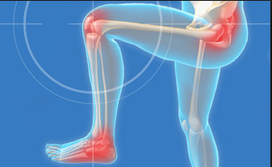 By Bisa Dobson, RMT If you’re an arthritis sufferer it’s likely you felt the cold weather coming on well before it got here. Though there is relatively little research on the subject, most doctors agree that frigid temperatures tends to exacerbate the pain and stiffness in their arthritis patients feel in their joints. While that is pretty bleak news for anyone whose arthritis symptoms take a turn for the worse when the mercury drops below zero, there's no need to fret. You see, we’ve got 7 easy tips to help you survive, and (with any luck) even thrive, this winter. ‘Tis the season for Layers: Bundle up in multiple layers of clothing to protect your body's tissues and reduce the effect of rapid temperature changes on your joints. Your winter gear should include: good waterproof boots; a warm full-length jacket or coat; sweaters, sweatshirts, and turtlenecks; sweatpants and long pants; as well as thermal undergarments. Finally, always, Always, ALWAYS wear a hat, scarf, and gloves or mittens when going outside. Eat Well. Choosing a nutritious foods and having a balanced diet are good ways to boost your immune system and encourage healing. Ditch the junk food and indulge in plenty of fruits, vegetables, fish, unsalted nuts and seeds, and whole grains instead. In contrast, it’s best to avoid alcohol, caffeine and nicotine, because they have drying effects on the cartilage found in your joints. Ensure your body stays hydrated by drinking plenty of water, healthy unsweetened juices and coconut water. Get Physical…Indoors: While some may argue that a moderate amount of snow shovelling is good exercise, allowing your body to get cold is an absolute no-no if you want to keep your arthritis symptoms in check this winter. So avoid dashing outside to get the mail or quick trips to the convenience story without donning proper outerwear. Also, when cabin fever starts to set in and you need some exercise head to your local mall for a walk. If walking isn't your thing, try other low-impact activities like water aerobics, dancing or a gentle yoga class. Though it seems counter intuitive when you’re experiencing pain, keeping your body moving will definitely ease the stiffness in your muscles and joints. To see more videos with great exercises to combat arthritis pain this winter and beyond visit Kim McNeil, Certified Yoga Instructor & Arthritis Specialist's YouTube page. Get Lots of R & R. Never underestimate the importance of a good night’s sleep. In addition to restoring your energy so you can better manage pain, research indicates that people who have six or fewer hours of sleep a night suffer from more inflammation – which aggravates arthritis symptoms – due to higher levels of inflammatory proteins in their blood stream. Moreover, having a therapeutic massage treatment can reduce your symptoms and improve your mood. Ask your therapist about using ice packs to reduce inflammation and/or paraffin wax treatments, to warm and soften your hands and feet during treatments.
Keep it Hot, Hot, Hot. Choosing to save your pennies by lowering the thermostat is not a good option for arthritis patients, as your joints and muscles are likely to pay for it dearly in the long run. So keep room temperatures at a comfortably warm setting while you’re at home. If cost saving is a concern, consider using a programmable thermostat that you can set to a lower temperature during the hours you’re at work, and adjusts to a higher one right before you come home. For added warmth use an electric blanket while you sleep, or heating pads to tend to more localized areas that become stiff and painful while at rest. Keep a Pain Diary. Track your arthritis symptoms on a daily basis. Record your level of pain at different times of day, as well as how you're feeling in general, your mood and what activities you can and cannot do. It’s also important to keep a record of the medications you take each day and everything you eat. Be sure to have your diary on hand every time your see your doctor, because a having a well informed physician = more effective treatments and prescriptions. 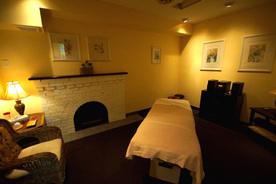 One of the four massage rooms in our new space. One of the four massage rooms in our new space. By Bisa Dobson, RMT Happy New Year!! If you haven’t come to see us in a while, it’s likely you’ve missed all the BIG changes that have happened for us recently. First off, we’ve gone and gotten ourselves a brand new name. That’s right, we’re no longer working under the Know Your Body Best Massage moniker. As of December 1, our little clinic that could is known as… Neighbourhood Massage Therapy But wait! There’s more… We’ve moved – just down the street to 873 Broadview – into BIGGER and even BETTER location. But not to worry, none of these changes, BIG as they may be, have impacted the warm and friendly service you’ve come to expect from all of us here at Neighbourhood Massage. We’re all still right here (with not one, but two returning additions to the team no less) to provide you with the same quality of care the Danforth and Riverdale neighbourhoods have come to expect from us for the past 20 plus years. So, if you’ve yet to visit us in our shiny new digs, rest assured that…
All the best to you and yours for 2015!! |
Your Friendly Neighbourhood RMTWe love providing massage therapy to the best 'hood in Toronto! Archives
July 2016
Categories |
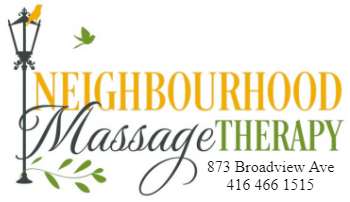
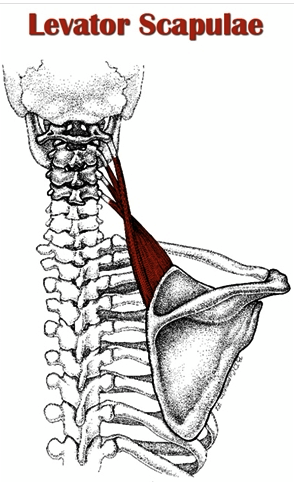
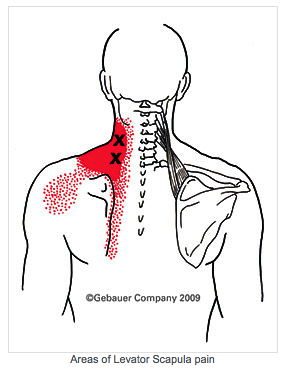
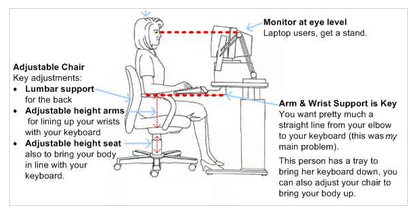
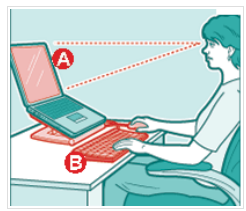
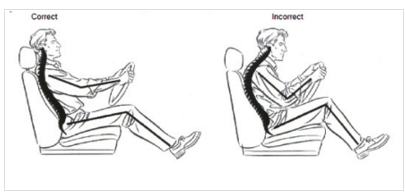
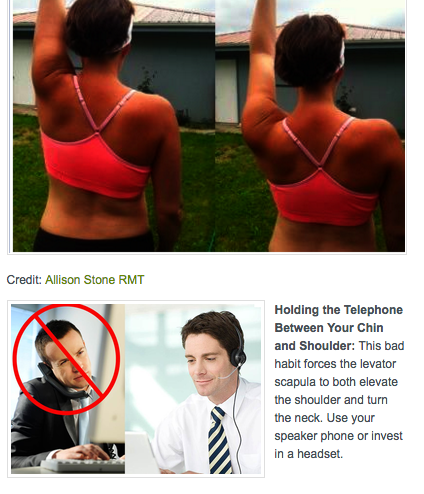
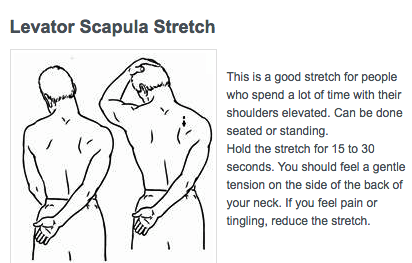
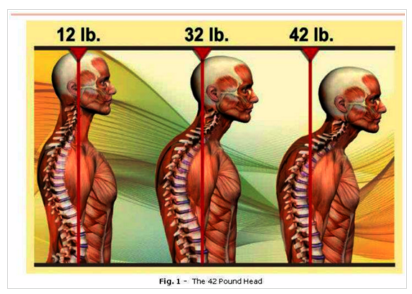
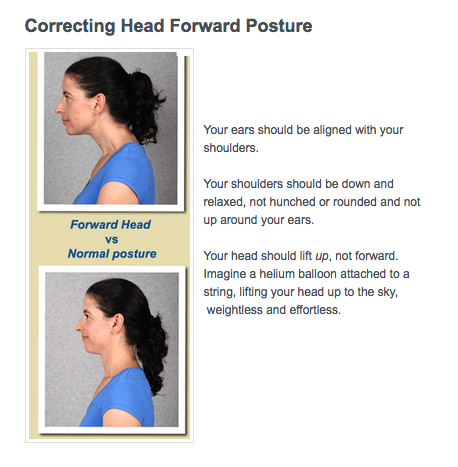
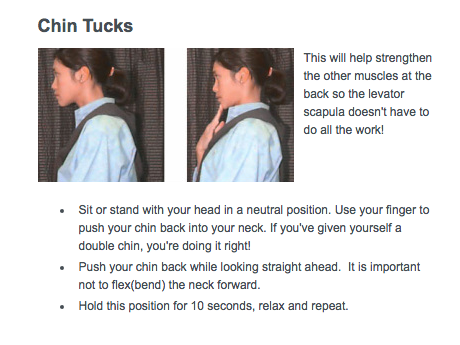
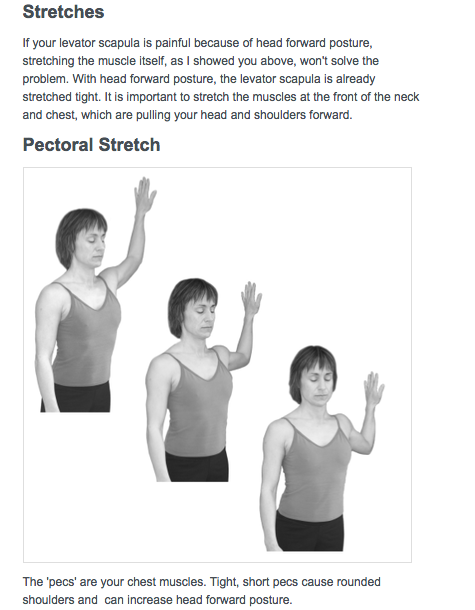

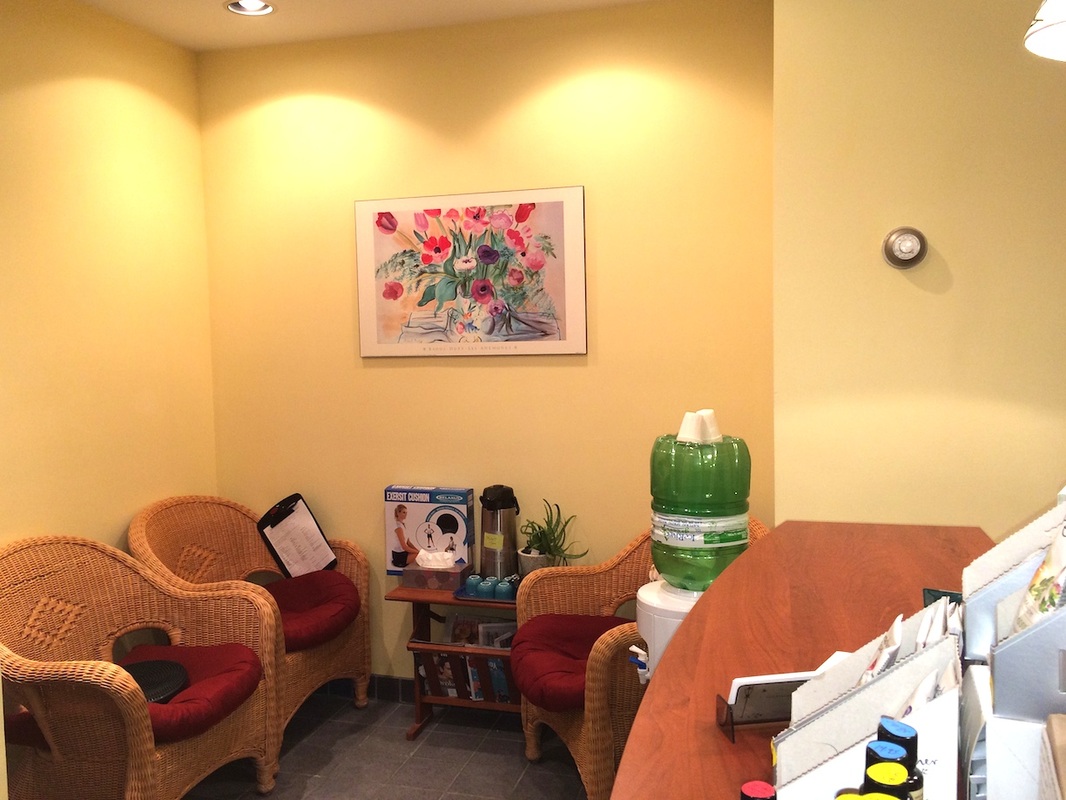
 RSS Feed
RSS Feed
